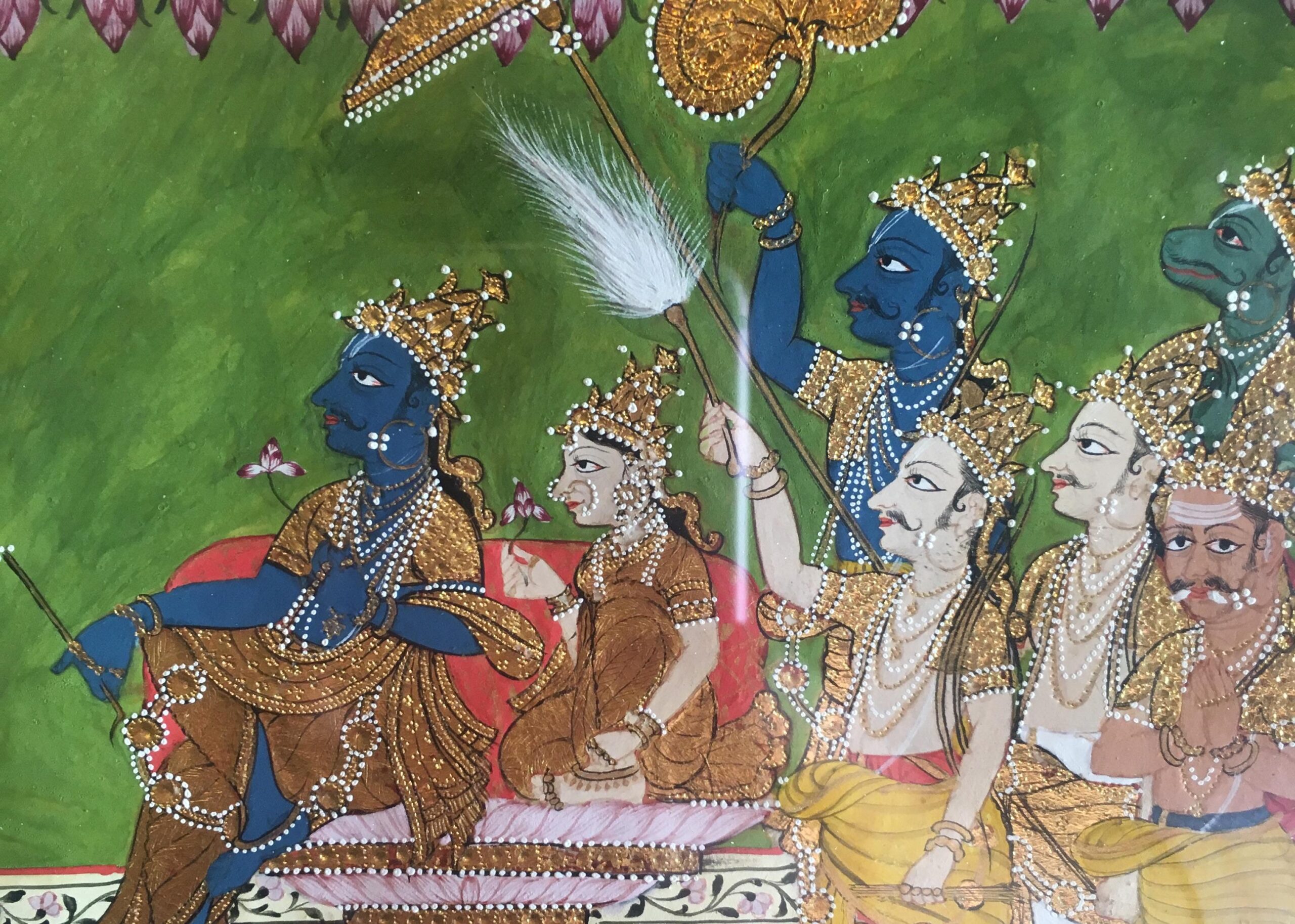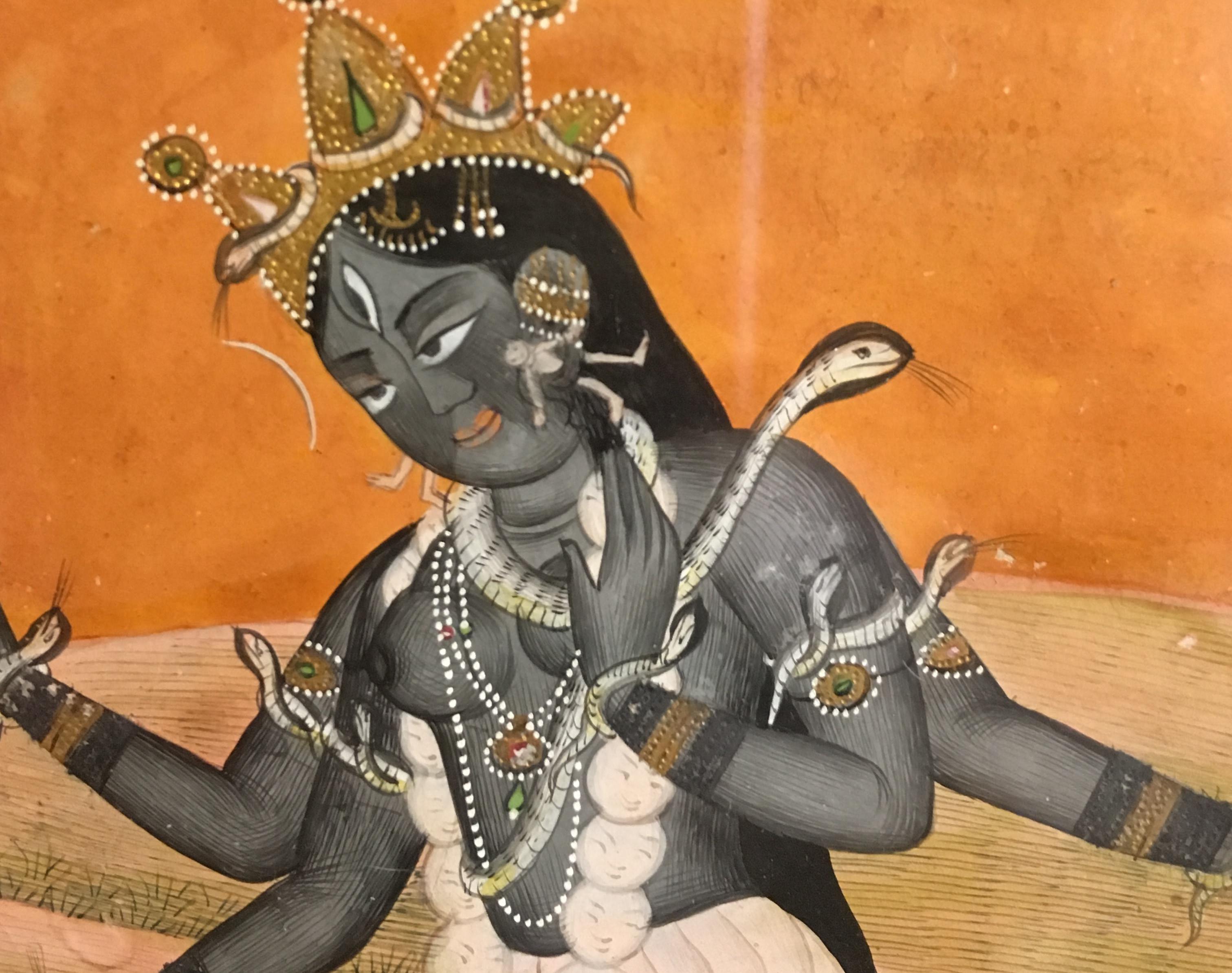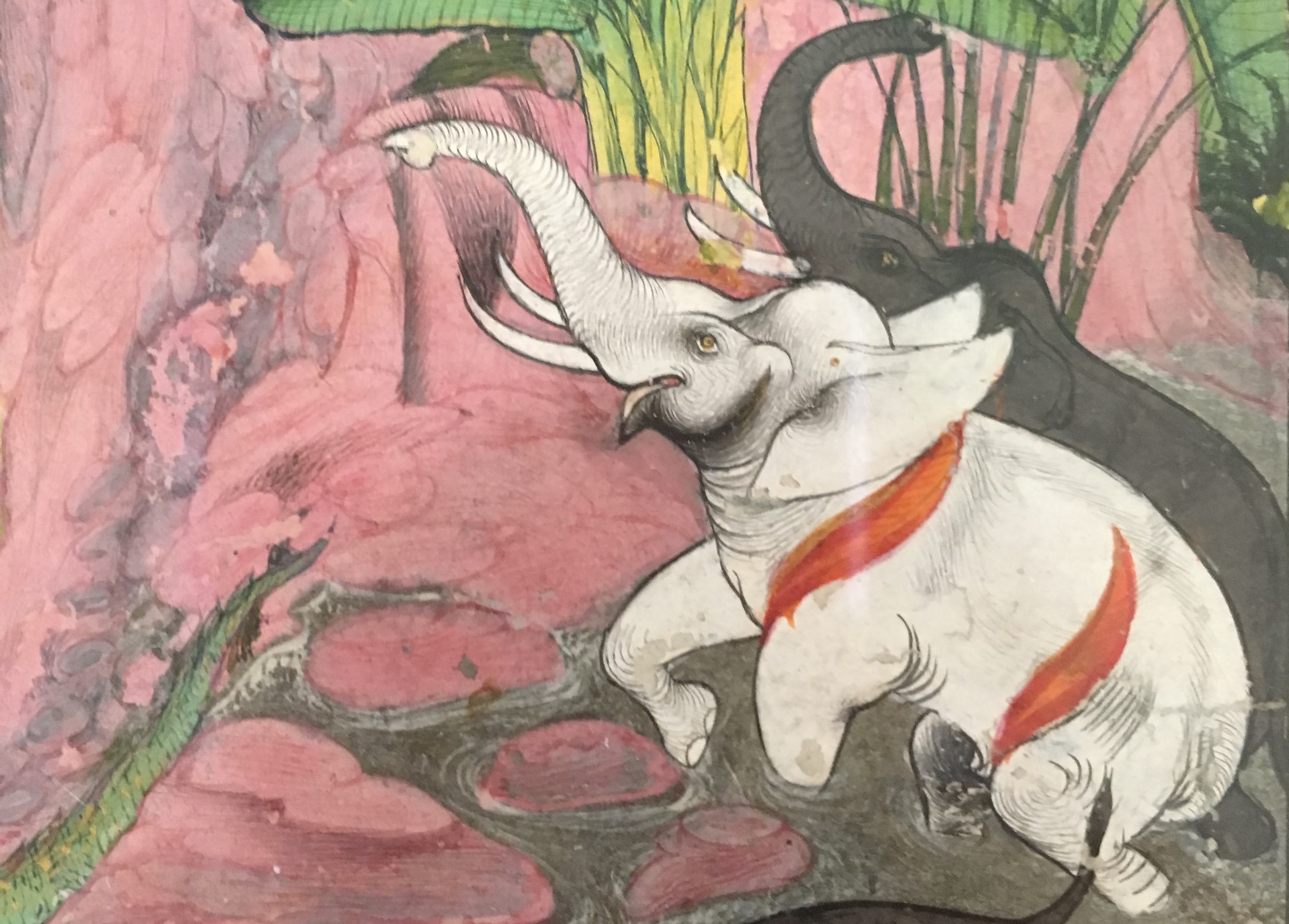Working with the Davis Museum at Wellesley College, Harvard doctoral student Sonali Dhingra has brought to life a collection of South Asian paintings and sculptures from across the Indian subcontinent, provided by private collectors Carol (alumna of Wellesley College, ’79) and John Rutherfurd. This fall, the Rutherfurd Collection will be on display at the Davis Museum from September 12 to December 15, 2019.
The collection consists of two stone and metal sculptures from between the 9th and 11th centuries, and seven paintings from the 17th and 18th centuries. Taking on a new niche in her studies, Dhingra — whose dissertation specializes in medieval Buddhist sculpture — researched the individual objects, grouping them in ways that took into account their theme and chronology. Earlier this year, she set out in the museum’s study room, closely examining the paintings and discovering the most minute details, from individual brushstrokes to small inscriptions describing the patron or subjects depicted. It’s a unique experience, which allowed Dhingra to “trace the hand of an artist or the eye of the patron who coveted the object,” she says.
Behind the scenes, Dhingra worked closely with an art handler, who moved and rotated the objects, showed how they’ve been cast, and helped determine if they’d been inscribed. These objects, now so far out of their time and context, presented an exciting challenge to Dhingra. “This is what we do as art historians — we look closely at these objects and gather exciting clues about the past,” she says.
“The objects chosen by the collector were comprehensive. Spanning over 800 years and covering a large geographical area, this set of objects from a private collection introduces major themes in South Asian cultural history, and ranges from pre-modern religious sculpture to early modern court paintings,” Dhingra describes. “These objects also belong to diverse regional contexts, which is reflected in their distinctive visual forms. The paintings on view demonstrate different influences, including indigenous Indic artistic traditions, and Mughal ateliers. Some examples provide glimpses of significant mythological stories, such as the Ramayana, which are part of living traditions in South and Southeast Asia today.”
Getting up close with the paintings, Dhingra discovered the tiniest details that can only be seen in person. She explored “the tactility and three-dimensionality of the pearls on a nineteenth century Deccan painting, the tiny corpse earrings that are part of the jewelry worn by the terrifying Indian goddess Kali in a mid-eighteenth century Kangra painting, [and] the intricate details of an artist’s depiction of Ardhanarishvara, the composite form of Shiva and Parvati in a Bundi painting from Rajasthan.”
Portraying both religious and non-religious themes, the objects give further insight into the foundational concepts of South Asian art. “They represent a rich variety of artistic styles and workshops from India,” Dhingra explains. “Some objects, such as a Pala period Buddha sculpture, hint at the shared traditions across a large part of Asia. Other objects provide a glimpse of local renditions of narratives. In short, this small set of objects can serve as a broad examination of Indian art and human creativity, even for an uninitiated audience.”
Through the preparation of this exhibit, Dhingra gained new knowledge that helped her make connections across periods and geographical distances in South Asia. “South Asian art is unique for its very diverse themes that relate to the religious and cultural multiplicity in India, as well as the varied outside influences that have enriched the subcontinent’s cultural production through time,” she says. “Working on this project is an exciting opportunity to continue improving my knowledge of different time periods and artistic traditions of South Asia. Most of all, [this experience] affirmed my love of art-objects.”
The Rutherfurd Collection is available for viewing at the Davis Museum at Wellesley College from September 12 – December 15, 2019.
——————
The curatorial research for this project was supported by the Mittal Institute’s Arts Fund.



